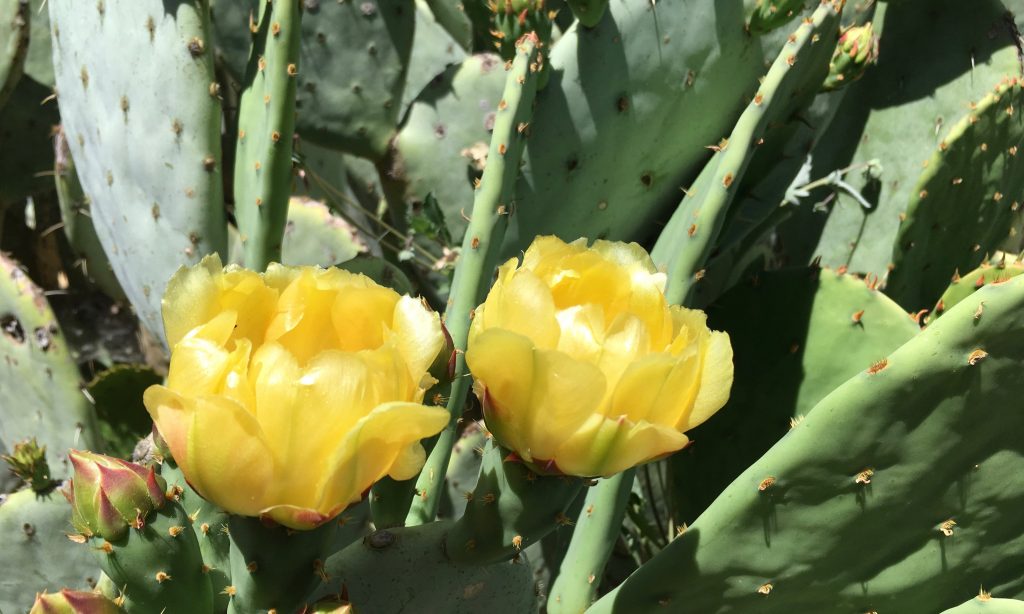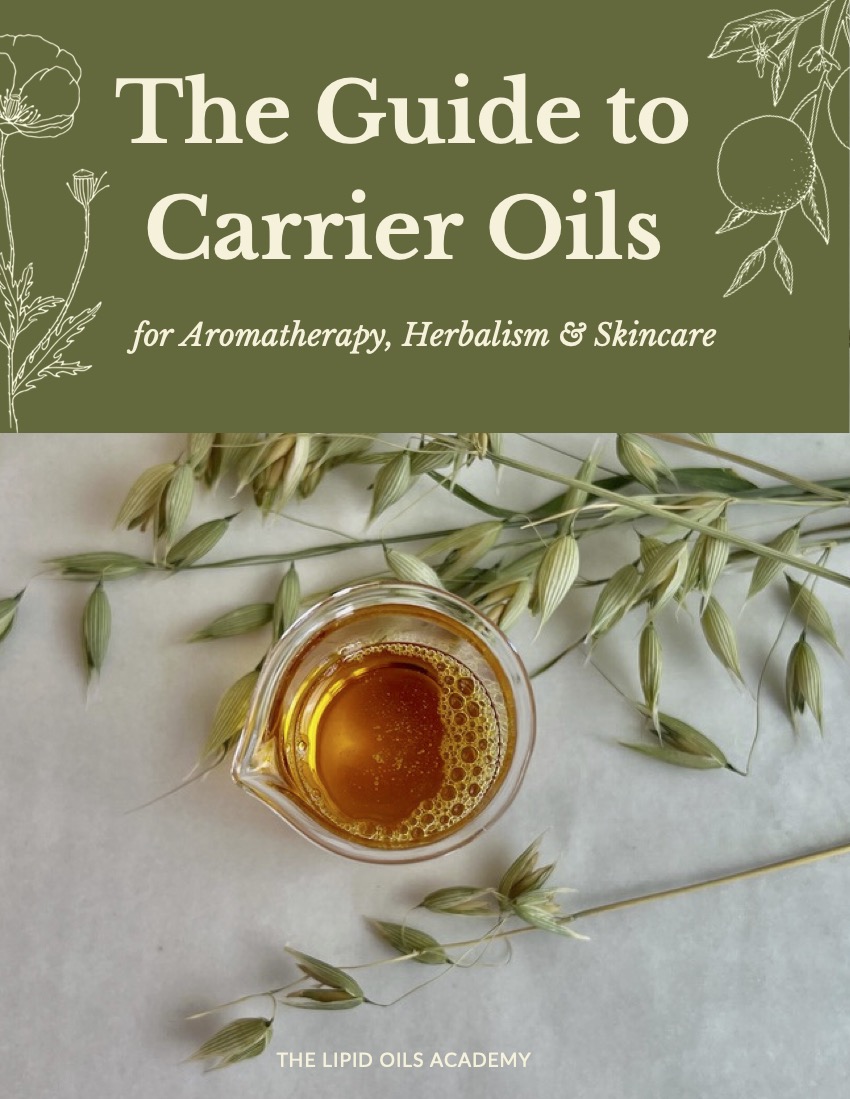Light, highly absorbent, high in vitamin E and antioxidants, prickly pear seed oil is wonderful skincare oil to reach for no matter what your skin type.
The catch….
It’s not always easy to find or particularly affordable.
When I was wrapping up the final edits for my book Power of the Seed I was just starting to see this exotic-sounding oil from a few select suppliers (actually just one supplier) at what seemed like an astronomical price.
At the time I was still deep in creating products for my skincare line and so prickly pear seed oil, both the cost and finding a reliable supplier put this oil out of reach.
And, I thought, I could add this oil to the book before I send it off, but ultimately I didn’t. I thought the high price and the scarce availability would keep prickly pear seed oil from gaining a following.
I was wrong.
In the years since I’ve written the book, prickly pear seed oil has become important, loved and a much sought after oil. It is my daughter Olivia’s favorite skincare oil and it is becoming one of mine too.
Here are a few reasons why this oil has stolen our hearts around here.
It absorbs rapidly and feels light on the skin
Prickly pear seed oil absorbs quickly and completely helping protect against the forces that tend to age our skin; weather, dryness, and time. This makes it a wonderful oil for summer when temperatures rise and we tend to sweat more.
Skin supporting fatty acids
It supports supple skin and elasticity by supplementing the skin’s natural lipids (fats). And, its skin-supporting fatty acids help to maintain a smooth even complexion.
The fatty acids are predominantly unsaturated with 60% essential linoleic acid as well as small amounts of palmitoleic and essential Alpha-linolenic acids, both vital for skin health.
It’s high in vitamin E
Possessing some of the highest levels of vitamin E, the tocopherols, prickly pear seed oil provides antioxidant protection that helps to stabilize and protect skin cells from damage. It is also helpful in lightening up dark spots on the skin. This is related to the high density of plant nutrients, including vitamin e present in an unrefined or lightly refined prickly pear seed oil.
Adapted to the Desert
Prickly pear seed oils’ ability to protect and maintain moisture in the skin is, I think, directly linked to the plants’ native habitat. Prickly pear cacti grow in arid, dry and often harsh desert conditions. The tiny seeds from the prickly pear fruit are tiny but packed with nutrients to support the new plants during germination and early growth. These same tiny, nutrient-dense seeds give us a nutrient-dense oil. Seeing these patterns and correlations in nature and the oils is something I love about my research and study into these lipid oils.
Common names and native regions
Prickly pear seed oil has a number of popular names including India fig, Opuntia, Barbary fig seed oil, Indian fig seed oil, and prickly cactus seed oil. It is a member of the cactus family, Cactaceae and a native of Mexico, but the plant is now grown in arid and semi-arid regions all around the world. Many suppliers source prickly pear seed oil from India and Morocco. In general, I find this oil sourced from India to be slightly less expensive than the Moroccan sourced oil, but all these elements are in constant flux as new suppliers emerge and competition increases.

Fatty Acid Profile
Fatty Acids Found In Prickly Pear Seed Oil: the percentages below are representative of the species but not exact.
Linoleic Acid 60.5%
Oleic Acid 20.6%
Palmitic Acid 13.9%
Stearic Acid 3.2%
Palmitoleic 1%
Linolenic 1%
Tocopherol 895 mg/kg
Adding prickly pear oil to your skincare routine
Apply the oil to clean skin and massage it into the face where it absorbs just enough yet leaving a protective lipid film on the surface. It is not oily or greasy and has a full-bodied feel on application. A single application in the morning keeps my skin feeling great all day. Extra dry skin could benefit from a second application when feeling tight or dry.
Do you use prickly pear seed oil? I’d love to hear what you think and your experience with this oil in the comments below.



I began using PP oil about 8 month ago. I an 57, and STILL have oily skin. PP oil is the perfect night time oil for me. I mix 3 drops with my night cream, and it just sinks right in. I have noticed that my sun spots have begun to fade also. I love this stuff!!!!
What Company is a good resource to purchase oils and specially prickly pear their are so many companies claiming to have the best and pure oils and I am afraid of adulteration of oils their are so many beautiful oils I would love to try
Eden’s Garden has a nice PP pear oil that is reasonably priced. Also Essential Wholesale or J. Edwards Bulk oils.
Thank you
I am here in Spain, this summer it’s been hot 90 & up The air is dry & water has high minerals
Prickly pear with local olive cold press oil has been life saving for my whole body skin. After a cool shower apply on my wet skin. Yum!!! And eating a lot of olives
Thanks for sharing Susan😀
Sounds lovely! Thanks for sharing,
SMP
This is by far the most loved one oil I have used since 2015,but clients don’t know about this oil and it didn’t present interest,, maybe it was not enough advertised as other oils are! Thank you, for your wonderful blog, that is very helpful 🙏❤️
Hi Susan! I’ve been using prickly seed oil alone on my face for a month now and i swear this oil is a gem! I’m currently pregnant right now and acnes had been popping on my face every week, possibly due to hormonal changes. The magic begins when I used the prickly seed oil! My facial skin is now glowing, i never look so fresh in comparison with my past pregnancy. I live on a humid and tropical country somewhere here in South East Asia but the prickly seed oil feels light and doesn’t make my face looks oily at all. I can even dab a small amount of powder on my face and the effect is matte finish 🙂
I have been hearing a lot lately about it, but the first person to tell me about it was my mother in law, as they grow the bushes and handpick the fruits themselves, and the taste of the fruit is the most delicious fruit I have ever eaten. Can you direct me towards reputable and authentic suppliers for this oil, if you don’t mind? Thank you for all the great infos in your book and your blog.
Najah, I know of sources in the US but elsewhere I’m not sure. There is a sources list of carriers world wide in the Files Section of the Lipid Love Facebook group – have you joined us there yet? You might find some suppliers to contact if not in the US.
https://www.facebook.com/groups/lipidlove/
Susan
Yes, I mix prickly pear with other oils. For summer it is raspberry and blacberry and blueberry. For winter time it is rosehip. I use it every single day. And yes it’s expensive but I’m worth it 🙂
hi! where do you get raspberry, BlackBerry n blueberry oil please?
My friend in Germany uses Prickly Pear flower extract in her face creams. I’ve had a hard time finding this in the USA. Wonder what the differences are in how it affects the skin .. extract vs. oil.
hi! where do you get raspberry, BlackBerry n blueberry oil please?
Hi Carol, There are lots of great sources – If you are a member of the Lipid Love Facebook group there is a Sources document in the files section of that group. But if not here are a few places you can look up – Essential Wholesale in Portland, Lotion Crafter in WA state, and a company called From Nature with Love usually has lots of exotic oils. Raspberry you can get from Berry Beautiful – they product their own oil.
Interesting, very interesting! I am so glad to know they are high in Vitamin E. As well as age spots!! Thank you for the information, Susan!
Thank you for the information, I’ll research into it more.
Very interesting! Between prickly pear and papaya seed oils, which ones do you think would work best for lightening dark spots on the skin? Thank you! 😊
Hi Laetitia, They both have that reputation but I’m sorry I haven’t worked much with papaya seed oil so can’t say. It might be nice to mix them in a facial oil and get a double dose of the actions.